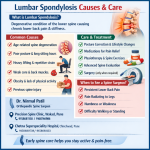Introduction: Pilonidal sinus is a relatively common but often misunderstood condition characterized by the development of a small tunnel or cyst near the cleft of the buttocks. While it may seem minor at first, pilonidal sinus can cause significant discomfort and complications if left untreated. In this comprehensive guide, we will delve into the causes, symptoms, diagnosis, treatment options, and prevention strategies for pilonidal sinus.
- What is Pilonidal Sinus?
- Definition: Pilonidal sinus, also known as pilonidal cyst or pilonidal abscess, is a condition where a small tunnel or cyst forms in the skin near the tailbone, typically at the top of the buttocks.
- Anatomy: The pilonidal sinus often develops in the intergluteal cleft, where hair follicles and debris can accumulate, leading to inflammation and infection.
- Types: Pilonidal sinuses can vary in severity, ranging from asymptomatic cysts to painful abscesses requiring medical intervention.
- Causes of Pilonidal Sinus:
- Hair Entrapment: One of the primary causes of pilonidal sinus is hair penetration into the skin, which can occur due to prolonged sitting or friction in the buttock area.
- Congenital Factors: Some individuals may have predisposing factors, such as a deep cleft or excess hair growth in the sacrococcygeal region, increasing their susceptibility to pilonidal sinus.
- Environmental Factors: Poor hygiene, excessive sweating, and wearing tight clothing can contribute to the development of pilonidal sinuses by creating a conducive environment for bacterial growth.
- Symptoms of Pilonidal Sinus:
- Pain and Tenderness: Patients with pilonidal sinus often experience pain and tenderness in the affected area, especially during prolonged sitting or pressure.
- Swelling and Redness: The skin overlying the pilonidal sinus may appear swollen, red, and inflamed, indicating an underlying infection.
- Discharge: Pilonidal sinuses may produce foul-smelling discharge, which can vary in consistency from clear fluid to pus, depending on the presence of infection.
- Diagnosis of Pilonidal Sinus:
- Clinical Examination: Healthcare providers typically diagnose pilonidal sinus based on the patient’s medical history, symptoms, and a physical examination of the affected area.
- Imaging Studies: In some cases, imaging tests such as ultrasound or magnetic resonance imaging (MRI) may be performed to evaluate the extent of the sinus tract and rule out complications.
- Treatment Options for Pilonidal Sinus:
- Conservative Management: Mild cases of pilonidal sinus may respond to conservative measures such as warm compresses, regular cleansing, and hair removal to prevent recurrence.
- Incision and Drainage: For acute abscesses or infected sinus tracts, surgical incision and drainage may be necessary to alleviate pain and promote healing.
- Surgical Excision: Chronic or recurrent pilonidal sinuses may require surgical excision, where the sinus tract and surrounding tissue are removed to prevent recurrence.
- Postoperative Care and Recovery:
- Wound Care: After surgical intervention, proper wound care is essential to prevent infection and promote healing. This may involve keeping the wound clean, changing dressings regularly, and monitoring for signs of complications.
- Activity Modification: Patients are advised to avoid activities that put pressure on the surgical site, such as prolonged sitting or strenuous exercise, during the initial recovery period.
- Follow-up Visits: Regular follow-up visits with healthcare providers are recommended to monitor the healing process, address any concerns, and assess for signs of recurrence.
- Prevention Strategies for Pilonidal Sinus:
- Maintain Good Hygiene: Practicing good personal hygiene, including regular bathing and keeping the buttock area clean and dry, can help prevent the accumulation of debris and bacteria.
- Hair Removal: For individuals prone to pilonidal sinus, keeping the hair in the intergluteal cleft trimmed or removed may reduce the risk of hair penetration and subsequent infection.
- Avoid Prolonged Sitting: Taking breaks from prolonged sitting, using cushions or padded seats to reduce pressure on the buttocks, and maintaining good posture can help prevent pilonidal sinus in susceptible individuals.
Conclusion: Pilonidal sinus is a challenging condition that can cause significant discomfort and disruption to daily life. By understanding its causes, symptoms, diagnosis, treatment options, and prevention strategies, individuals can take proactive steps to manage the condition effectively and minimize the risk of recurrence. Early recognition and prompt intervention are key to achieving optimal outcomes and improving quality of life for patients with pilonidal sinus.
#pune #pcmc #chinchwad #hospital #medical #medicalservices #health #healthcare #surgery #generalsurgery #medicalprocedure #generalsurgeon #generalsurgeoninchinchwad













